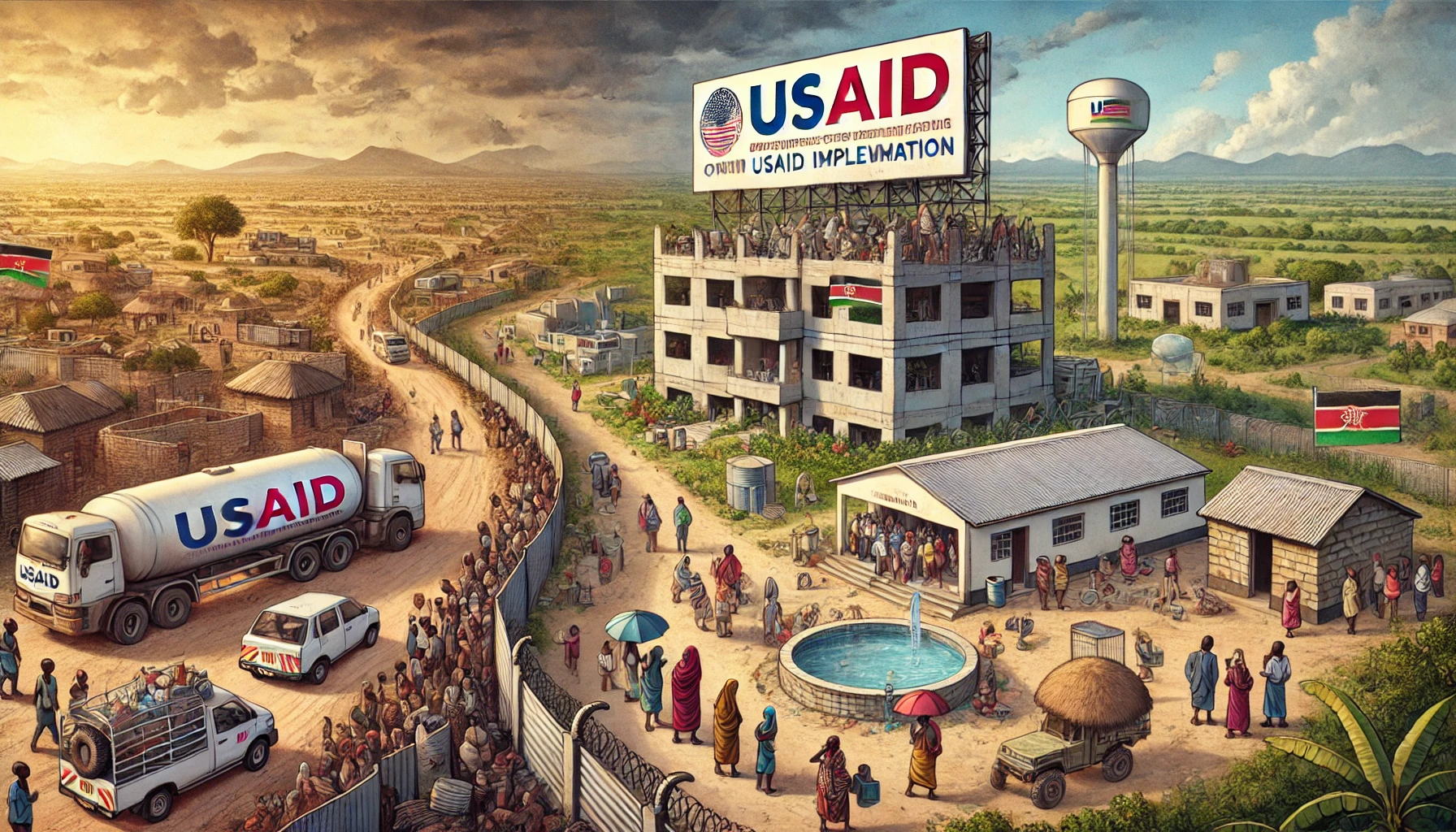The recent revocation of USAID’s operations in Kenya by former U.S. President Donald Trump has sparked global discussions on the future of international aid. While the ban is expected to disrupt funding for key sectors such as healthcare, education, and agriculture, many Kenyans have yet to feel its impact. The lingering question is: Why?
Key Highlights
✅ USAID halted operations in Kenya following corruption allegations.
✅ Billions in donor funds often do not reach intended beneficiaries.
✅ Political interference and mismanagement reduce aid effectiveness.
✅ Many USAID-funded projects exist only on paper, making their loss insignificant to ordinary citizens.
USAID’s Role in Kenya
For decades, the United States Agency for International Development (USAID) has been one of the largest foreign aid donors to Kenya, funding programs in:
- Healthcare (HIV/AIDS treatment, maternal health, disease control)
- Education (scholarships, school infrastructure, teacher training)
- Agriculture (food security, drought mitigation, irrigation projects)
- Economic Growth (small business funding, youth employment)
The abrupt withdrawal of USAID funding should have been catastrophic, yet most Kenyans have not reported significant changes in their daily lives.
Where Did the Money Go?
1. Corruption and Embezzlement
A major reason for the minimal impact of USAID’s exit is the long history of corruption surrounding foreign aid in Kenya. Investigations have revealed that:
🔴 Only a fraction of donor funds reach intended projects.
🔴 Ghost NGOs and fraudulent community-based organizations siphon off money.
🔴 Funds are redirected to private accounts through inflated contracts and kickbacks.
For example, a 2022 USAID report found that up to 40% of health sector funds were lost to corruption, including fake drug procurement deals and bribery in medical tenders.
2. Bureaucratic Bottlenecks
Even when aid money is allocated correctly, excessive administration costs and red tape slow down its impact. Millions are spent on:
- Consultants
- Expensive workshops and seminars
- High salaries for project managers
With much of the funding consumed by administrative expenses, only a small percentage is left for actual development work.
3. Political Interference in Aid Distribution
Foreign aid in Kenya is not always distributed based on need. Instead, it is often channeled to politically connected individuals or regions. This means that:
📌 Some areas receive excessive funding, while others remain neglected.
📌 Politicians use aid projects to win votes rather than solve real problems.
4. Fake or Exaggerated Success Reports
Many donor-funded programs exist only on paper or are massively exaggerated in reports. This creates a false impression that aid money is transforming lives when, in reality, communities see little change.
✔️ Example: A USAID-funded water project in Turkana was reported as “fully operational” in official documents, yet a local investigation found that not a single borehole had been drilled.
UNHCR and the Refugee Crisis: Another Scandal
In addition to USAID, the United Nations High Commissioner for Refugees (UNHCR) is facing scrutiny over:
- Bribery in refugee resettlement programs
- Nepotism in hiring staff
- Diversion of funds meant for refugee welfare
Kenya hosts over 600,000 refugees, mostly in Dadaab and Kakuma camps. Reports indicate that some UNHCR officials demand bribes to approve asylum applications, making it difficult for genuine refugees to access support.
Trump’s Rationale: America First or Humanitarian Neglect?
Trump defended his decision to revoke USAID’s operations in Kenya by arguing that:
1️⃣ Too much U.S. taxpayer money was being lost to corruption.
2️⃣ Foreign aid had become a tool for elites rather than the poor.
3️⃣ It was time for African nations to be self-reliant.
While his critics claim that this move harms vulnerable populations, others argue that Kenya’s aid dependency has slowed real economic independence.
What Happens Next?
1. Alternative Funding Sources
With USAID out of the picture, Kenya may turn to:
- China, which has been increasing its investment in African infrastructure.
- European Union (EU) programs, which still fund healthcare and education.
- Private sector partnerships, reducing reliance on foreign aid.
2. Investigations into Aid Corruption
With USAID’s exit, pressure is mounting for Kenyan institutions and NGOs to account for past funding misuse. More transparency measures may be introduced to prevent future scandals.
3. Shift to Local Solutions
The lack of USAID funding could push Kenya to:
- Improve local revenue collection.
- Reduce reliance on foreign aid.
- Strengthen self-sustaining development programs.
Final Thoughts
While USAID’s revocation is making headlines, its impact on ordinary Kenyans remains limited. Years of corruption, mismanagement, and donor-driven priorities have diluted the true impact of foreign aid. If Kenya is to move forward, it must rethink how it manages both donor funds and its own internal resources.
Call to Action
📢 What do you think? Has Kenya been too dependent on donor funds? Share your thoughts in the comments and join the discussion using #USAIDKenya #AidCorruption #KenyaPolitics.


